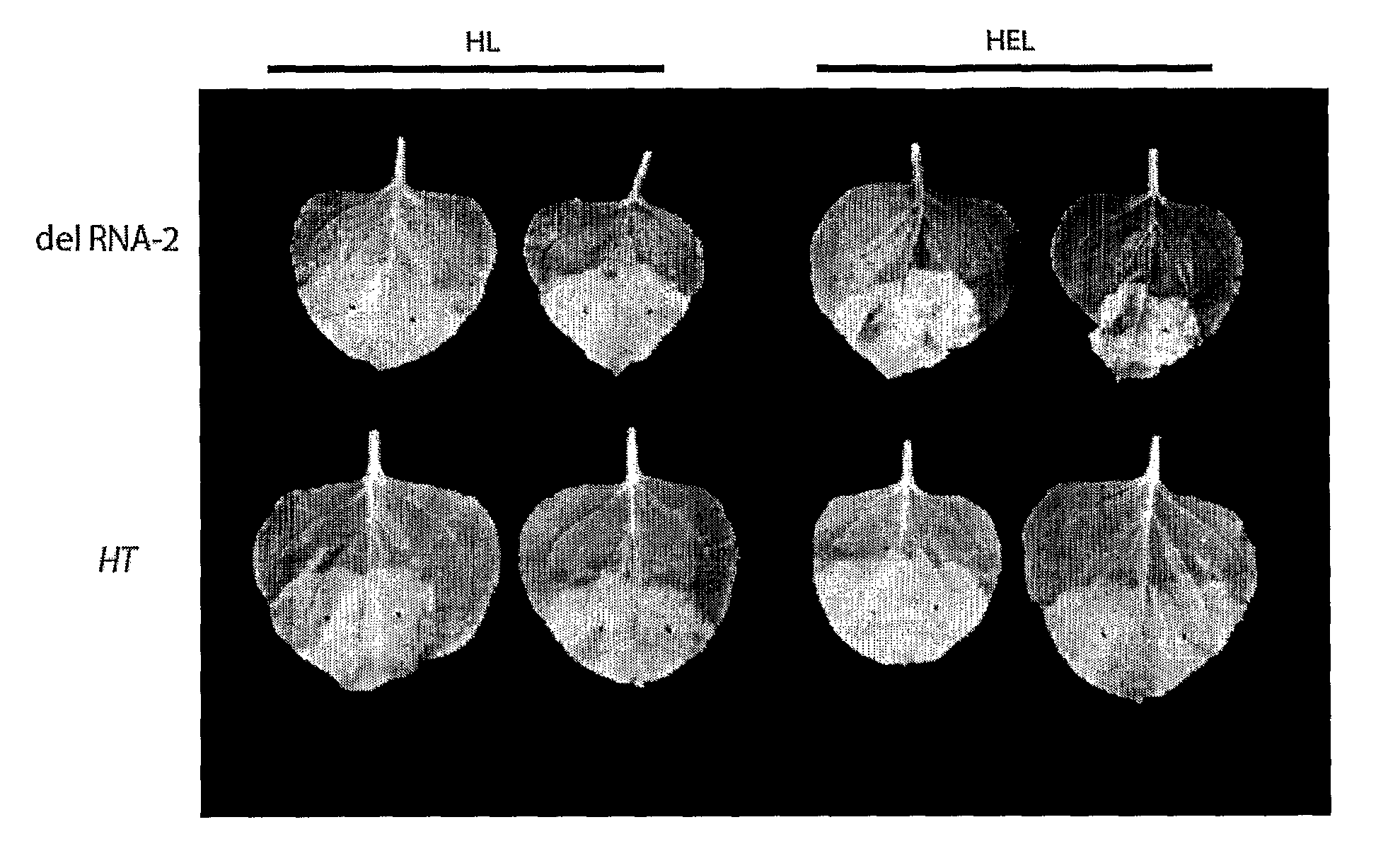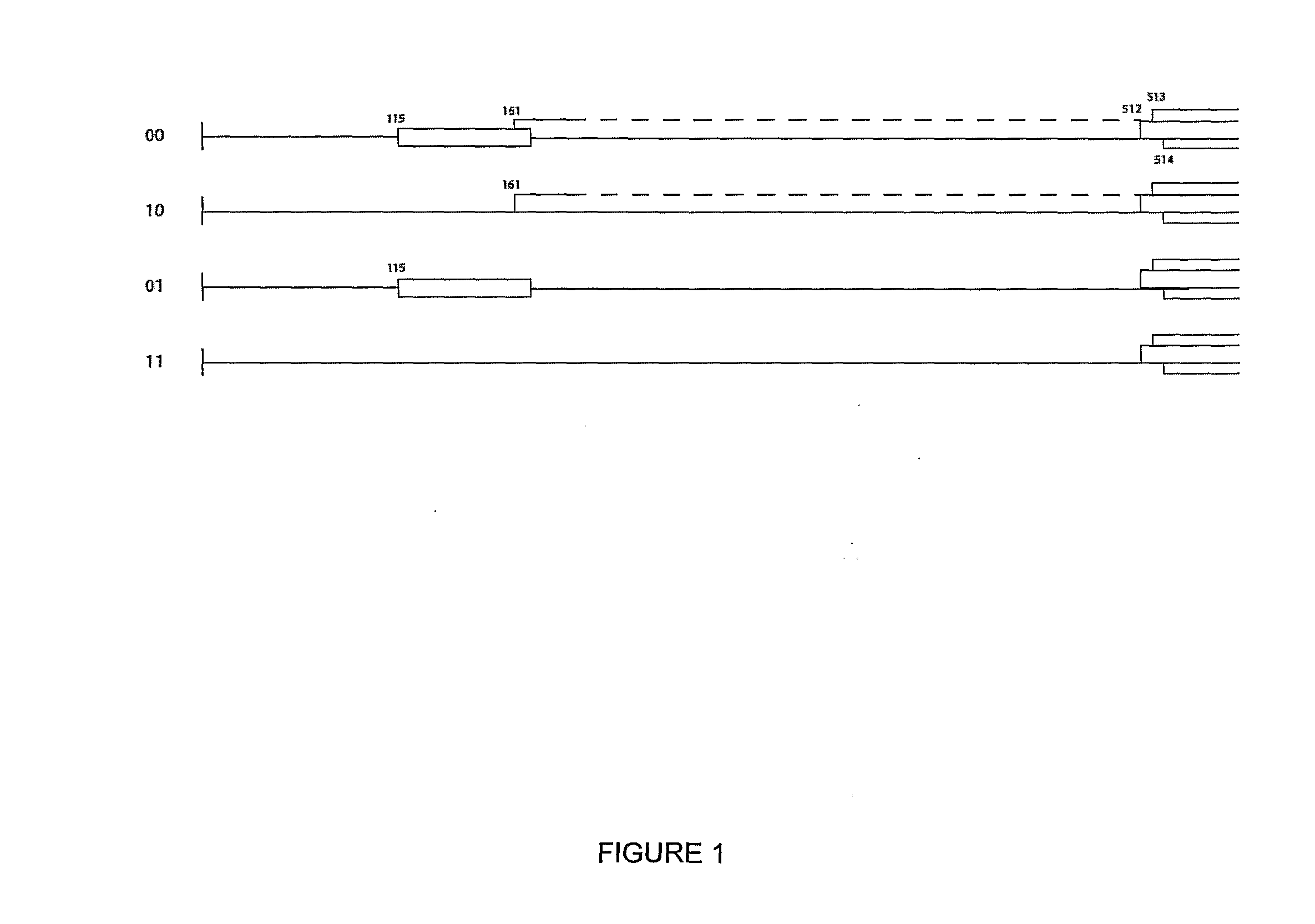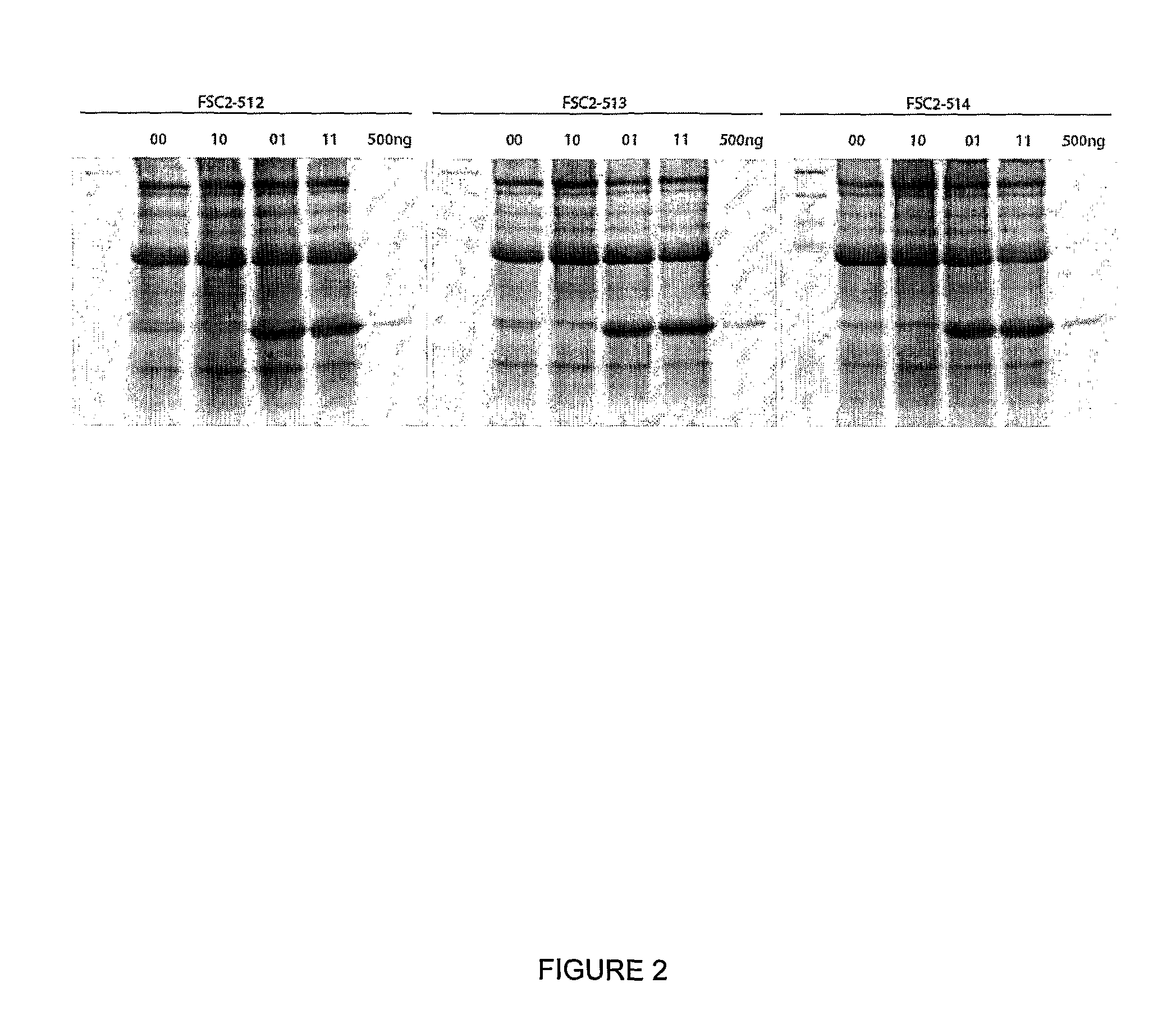Protein expression system
a protein and expression system technology, applied in the field of methods and materials, can solve the problems of inability to detect the production of such a peptide to date, difficulty in cloning foreign genes into such vectors, and inability to use full-length viral vectors. size constraints of inserted sequences, and concerns about biocontainmen
- Summary
- Abstract
- Description
- Claims
- Application Information
AI Technical Summary
Benefits of technology
Problems solved by technology
Method used
Image
Examples
example 1
1.1 Methods
Creation of Expression Vector FSC2 and its Derivatives
[0163]A useful cloning vector for the expression of foreign proteins from a pBinP-1-GFP-based plasmid (Cañizares et al., 2006) was created by excising the complete sequence of RNA-2 flanked by the Cauliflower mosaic virus (CaMV) 35S promoter and nopaline synthase (nos) terminator from pBinP-S2NT (Liu and Lomonossoff, 2002) and inserting it into mutagenesis plasmid pM81W (Liu and Lomonossoff, 2006) as an AscI / PacI fragment. The resulting plasmid, pM81W-S2NT, was subjected to a single round of mutagenesis which simultaneously introduced four changes (see method in Liu and Lomonossoff, 2006) to give pM81B-S2NT-1. The mutagenesis removed two BspHI sites from the vector backbone and introduced a BspHI site (T / CATGA) around AUG 512 and a StuI site (AGG / CCT) after UAA 3299, the termination codon for the RNA-2-encoded polyprotein. Subsequently, the BamHI / AscI fragment was excised from pBinP-NS-1 (Liu et al., 2005) and ligated ...
example 2
2.1 Background
[0175]As described in Example 1, to investigate the features necessary for the 5′ untranslated region (UTR) of CPMC RNA-2 necessary for efficient expression, the present inventors addressed the role of two AUG codons found within the 5′ leader sequence upstream of the main initiation start site. The inventors demonstrated that deletion of an in-frame start codon (161) upstream of the main translation initiation site (512) led to a massive increase in foreign protein accumulation.
[0176]Using this system the inventors have shown that by 6 d postinfiltration, a number of unrelated proteins, including a full-size IgG and a self-assembling virus-like particle, were expressed to >10% and 20% of total extractable protein, respectively. Thus, this system provides an ideal vehicle for high-level expression that does not rely on viral replication of transcripts.
[0177]This new system (as exemplified by expression vector 01 [FSC-512] in FIG. 1) has been called “CPMV-HT” for hyper-...
example 3
High Level IgG Expression from a Single Plasmid
[0198]In order to take advantage of the modular nature of the pEAQ series, CPMV-HT expression cassettes containing the ER-retained heavy chain (HE) and light chain (L) of the human anti-HIV IgG, 2G12 were inserted into the PacI / AscI and AsiSI / MluI sites of pEAQexpress. To determine whether the site of insertion influences expression levels, the L and HE chains were inserted into both positions yielding pEAQex-2G12HEL and pEAQex-2G12LHE (FIG. 13A). Infiltration of N. benthamiana with single Agrobacterium cultures containing the above plasmids resulted in the formation of fully assembled 2G12 antibodies identical in size to 2G12 produced by mixing three Agrobacterium cultures which each expressed the individual components, L, HE and P19 (FIG. 13C). The protein loaded in each lane represents 1 / 30 of the extract obtained from 90 mg of infiltrated tissue or 1 / 333 of the protein potentially obtainable from 1 g of tissue. The maximum amount of...
PUM
| Property | Measurement | Unit |
|---|---|---|
| concentration | aaaaa | aaaaa |
| OD | aaaaa | aaaaa |
| OD | aaaaa | aaaaa |
Abstract
Description
Claims
Application Information
 Login to View More
Login to View More - R&D
- Intellectual Property
- Life Sciences
- Materials
- Tech Scout
- Unparalleled Data Quality
- Higher Quality Content
- 60% Fewer Hallucinations
Browse by: Latest US Patents, China's latest patents, Technical Efficacy Thesaurus, Application Domain, Technology Topic, Popular Technical Reports.
© 2025 PatSnap. All rights reserved.Legal|Privacy policy|Modern Slavery Act Transparency Statement|Sitemap|About US| Contact US: help@patsnap.com



